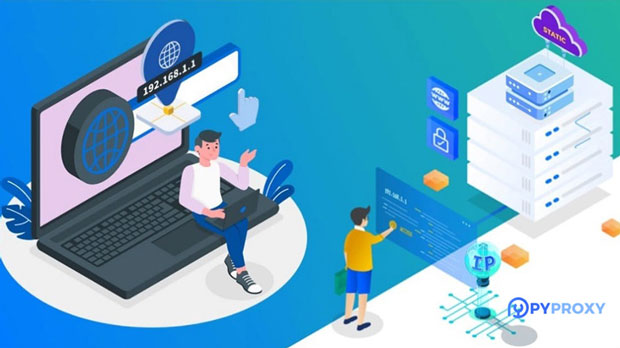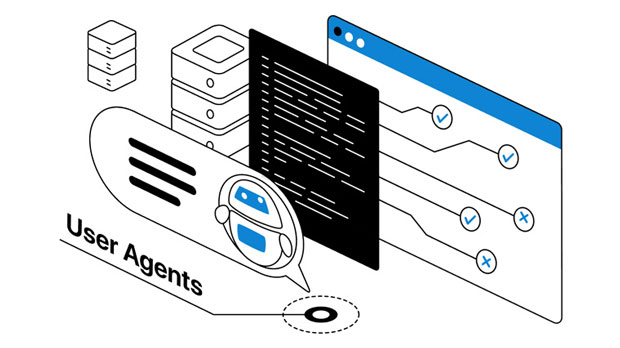When it comes to enhancing online gaming performance, many gamers turn to proxies for help. Two of the most commonly discussed proxies for game acceleration are HTTP proxies and socks5 proxies. Both offer distinct features and benefits, but when it comes to improving game speed, stability, and reducing lag, the suitability of each type of proxy depends on various factors. In this article, we will explore the differences between HTTP proxies and SOCKS5 proxies, analyzing their technical characteristics, advantages, and drawbacks. Ultimately, we aim to determine which proxy is better suited for optimizing gaming experiences. Understanding HTTP ProxyHTTP proxies, also known as HTTP/HTTPS proxies, are commonly used for browsing the web. They act as intermediaries between a client (such as a web browser) and a server, forwarding requests and responses to access websites or services. HTTP proxies primarily work with HTTP/HTTPS traffic, meaning they only process traffic designed for web communication.While HTTP proxies are fast and efficient for general internet use, they are not particularly suited for gaming. Their primary limitation lies in their protocol-based structure. Since they only handle HTTP requests, they are not compatible with most real-time gaming protocols that require complex, low-latency communication between game servers and clients.Characteristics of HTTP Proxy1. Limited Protocol Support: HTTP proxies can only handle HTTP and HTTPS traffic, which restricts their ability to manage the diverse and complex protocols used by online games. 2. High Speed for Browsing: For general internet browsing, HTTP proxies can offer high speed and low latency, making them suitable for non-gaming activities. However, this is not the case for gaming.3. Security and Privacy: HTTP proxies often provide basic encryption and anonymity by masking the user's IP address, but their security features are not as robust as those offered by SOCKS5 proxies.4. No UDP Support: HTTP proxies are not designed to handle UDP (User Datagram Protocol), which is often used in gaming to transmit real-time data such as player movements, game events, and voice communications.Understanding socks5 proxySOCKS5 proxies, on the other hand, offer more advanced capabilities and flexibility compared to HTTP proxies. SOCKS5 is a protocol that allows clients to connect to various types of servers and supports multiple types of internet traffic, including HTTP, FTP, and UDP. This makes SOCKS5 proxies more versatile, as they can handle a broader range of applications, including online gaming.SOCKS5 proxies function by relaying packets between the client and the server without altering the data. They operate at a lower level of the network stack than HTTP proxies, allowing them to handle traffic more efficiently. Since online games typically rely on UDP for fast and real-time communication, SOCKS5 proxies are often the preferred choice for gaming acceleration.Characteristics of SOCKS5 Proxy1. Wide Protocol Support: SOCKS5 proxies support a wide range of traffic types, including TCP and UDP. This makes them ideal for gaming, as most modern multiplayer games rely on UDP to deliver real-time game data with minimal latency.2. Low Latency: SOCKS5 proxies are designed for high-speed, low-latency data transmission. This is crucial for gaming, where even slight delays can negatively affect performance, causing lag or jitter during gameplay.3. Better Security and Privacy: SOCKS5 proxies offer better security than HTTP proxies because they provide more comprehensive encryption and anonymity. This can protect gamers from potential data breaches or security threats.4. Flexible Configuration: SOCKS5 proxies can be configured to work with various types of applications, making them ideal for users who want to optimize their connection for gaming without affecting their general internet use.Comparing HTTP Proxy and SOCKS5 Proxy for GamingWhen it comes to game acceleration, the main factors that determine the suitability of a proxy are speed, latency, protocol support, and the ability to handle real-time data traffic. Let’s examine how HTTP proxies and SOCKS5 proxies compare on these factors.Speed and LatencySOCKS5 proxies generally offer better speed and lower latency compared to HTTP proxies. This is because SOCKS5 is designed to handle real-time traffic, such as game data, more efficiently. Since most online games use UDP, which requires low latency and high-speed data transfer, SOCKS5 proxies are more capable of providing the necessary performance.In contrast, HTTP proxies often introduce more latency due to their inability to handle UDP traffic, which is essential for gaming. The additional overhead caused by handling only HTTP requests can result in slower performance and increased lag.Protocol SupportThe most significant difference between HTTP proxies and SOCKS5 proxies is their protocol support. HTTP proxies can only handle HTTP and HTTPS traffic, which limits their usefulness for gaming. Most multiplayer games use UDP to exchange real-time data, and since HTTP proxies do not support UDP, they cannot optimize gaming traffic.SOCKS5 proxies, however, support both TCP and UDP traffic, making them more versatile and better suited for gaming. Since most online games rely on UDP for real-time communication, SOCKS5 proxies are much more effective at ensuring smooth gameplay.Security and PrivacyWhile both HTTP and SOCKS5 proxies can provide some level of security and privacy by masking the user’s IP address, SOCKS5 proxies tend to offer better protection. SOCKS5 proxies allow for better encryption options, ensuring that the data transmitted during gaming sessions is more secure.HTTP proxies, on the other hand, offer only basic encryption and are more vulnerable to security risks. While this may not be a significant issue for casual gaming, players who prioritize privacy and security may prefer SOCKS5 proxies.Compatibility with Gaming ServicesSOCKS5 proxies are generally more compatible with a wide variety of gaming platforms and services due to their ability to handle multiple protocols. HTTP proxies, being restricted to web traffic, may encounter compatibility issues with certain gaming services or servers.For example, online multiplayer games like first-person shooters, real-time strategy games, and massive multiplayer online role-playing games (MMORPGs) require low-latency and high-speed data transmission. SOCKS5 proxies are better equipped to handle these demands, while HTTP proxies are often unable to meet the performance requirements.Which Proxy is Best for Gaming Acceleration?Based on the comparison, SOCKS5 proxies are generally the better option for game acceleration. Their ability to handle both TCP and UDP traffic, along with their low-latency, high-speed performance, makes them more suitable for optimizing gaming experiences. HTTP proxies, on the other hand, are better suited for general browsing tasks but fall short when it comes to handling the unique demands of online gaming.For gamers who want to reduce lag, improve connection stability, and ensure smooth real-time gameplay, SOCKS5 proxies are the clear choice. They provide the necessary features, such as support for UDP traffic and improved performance, that are essential for gaming.ConclusionWhile both HTTP and SOCKS5 proxies have their place in internet usage, when it comes to game acceleration, SOCKS5 proxies offer far superior benefits. They can handle the complex requirements of online gaming, offering better speed, lower latency, and more robust security. Gamers looking to improve their online gaming performance should strongly consider using SOCKS5 proxies for a smoother, more responsive gaming experience.
Jan 03, 2025





















































